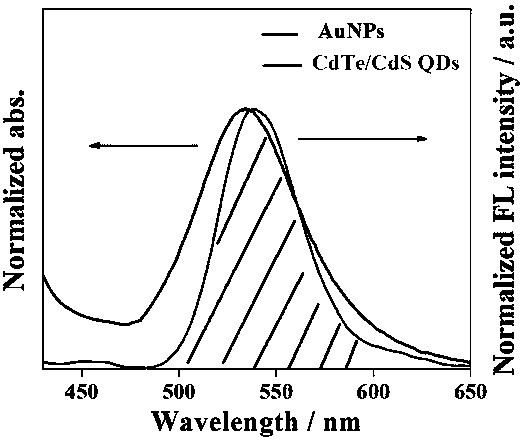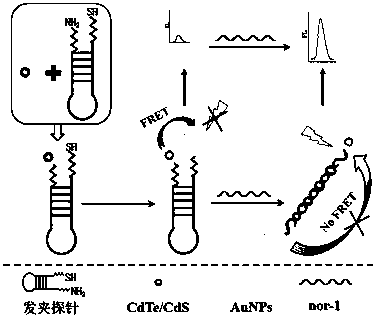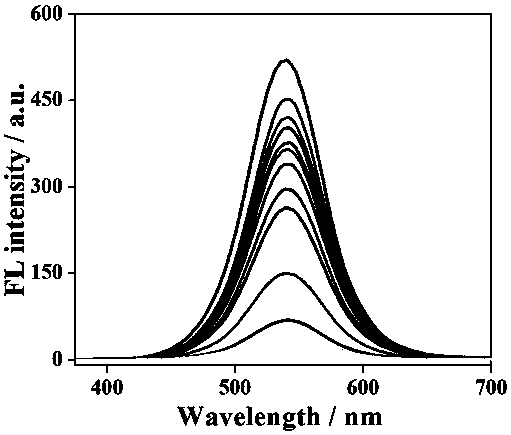Preparation and detection methods of fluorescence sensor for aflatoxin toxin production gene nor-1
A technology of nor-1 and aflatoxin, applied in the field of fluorescence sensing, can solve problems such as difficult dispersion, easy agglomeration, fluorescence intensity, particle size and dispersion state, etc., to achieve good dispersion, stable fluorescence performance, and theoretical basis mature effect
- Summary
- Abstract
- Description
- Claims
- Application Information
AI Technical Summary
Problems solved by technology
Method used
Image
Examples
Embodiment Construction
[0022] In order to strengthen the understanding of the present invention, the present invention will be further described below in conjunction with accompanying drawing and embodiment, and following embodiment further illustrates content of the present invention, but should not be interpreted as the limitation of the present invention, under the situation of not departing from the essence of the present invention , Modifications and substitutions made to the methods, steps or conditions of the present invention all belong to the scope of the present invention.
[0023] The present invention is a method for preparing a fluorescent sensor of aflatoxin toxin-producing gene nor-1. The fluorescent sensor is a long-arm hairpin probe based on specific recognition of aflatoxin toxin-producing gene nor-1. Both ends of the hairpin probe carry NH 2 and SH, NH 2 CdTe / CdS quantum dots with a core-shell structure, and SH-modified gold nanoparticles AuNPs, when there is no target, the CdTe / ...
PUM
 Login to View More
Login to View More Abstract
Description
Claims
Application Information
 Login to View More
Login to View More - R&D
- Intellectual Property
- Life Sciences
- Materials
- Tech Scout
- Unparalleled Data Quality
- Higher Quality Content
- 60% Fewer Hallucinations
Browse by: Latest US Patents, China's latest patents, Technical Efficacy Thesaurus, Application Domain, Technology Topic, Popular Technical Reports.
© 2025 PatSnap. All rights reserved.Legal|Privacy policy|Modern Slavery Act Transparency Statement|Sitemap|About US| Contact US: help@patsnap.com



